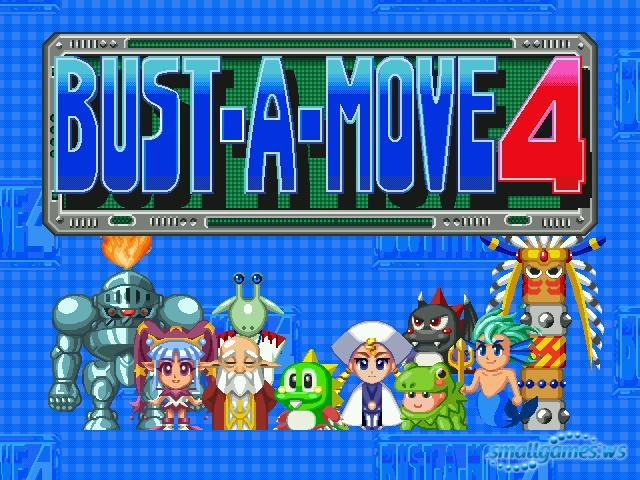

- #Bust a move 4 computer trade in series
- #Bust a move 4 computer trade in ps2
- #Bust a move 4 computer trade in windows
#Bust a move 4 computer trade in ps2
Tom Russo of NextGen found the Japanese PS2 import a bit disappointing and no different from the original game. Geraint Evans of NGC Magazine regarded the game as worth owning, but only on one console. As for BAM3000, there was nothing new and the analog controls were awkward, but the multiple gameplay modes kept players happy.
#Bust a move 4 computer trade in series
Ryan Davis of GameSpot said the PS2 version has the best graphics and sound of the series to date, "with extraordinarily sharp 2D graphics and a healthy amount of visual splendor", but that its gameplay represents an "incredibly stripped-down" disappointment to the series which "brings virtually nothing new to the franchise" and is missing a lot of features from the previous year's Bust-a-Move 4. In Japan, Famitsu gave it a score of 28 out of 40 for the PS2 version, 24 out of 40 for the Game Boy Advance version, and 26 out of 40 for the All-Stars edition. The PlayStation 2 and Game Boy Advance versions received "generally favorable reviews", while Bust-A-Move 3000 received "mixed" reviews, according to the review aggregation website Metacritic. The game was showcased at the February 1999 AOU Amusement Expo in Japan. The GameCube All-Stars version has a four player option and a Space Invaders-style mode called "Shoot Bubble". New to this game are large-sized bubbles and a two player cooperation mode, in which players work together to solve a stage. It has single player, training, computer competition, and two player competition modes. It bestows some audiovisual improvements, adds and removes gameplay elements, adds a new art style, and adds a new character roster. Super Puzzle Bobble gameplay is essentially the same as the rest of the series. It is the first mainstream game in the series not to see an arcade release, although there is an arcade game with the same title, which is a completely different game to this one. It also features new box artwork, more in line with the in-game artwork. The game is a direct port, except for the inclusion of new backgrounds and remixed music.


Super Puzzle Bobble was ported to the GameCube in 2003, under the name of Super Puzzle Bobble All-Stars ( スーパーパズルボブル オールスターズ, Sūpā Pazuru Boburu Ōru Sutāzu) in Japan, Super Bust-A-Move All-Stars in Europe, and Bust-A-Move 3000 in North America. This compilation includes a few graphical enhancements. It was re-released in Japan for the PlayStation 2 in 2004 as part of Super Puzzle Bobble DX ( スーパーパズルボブルDX, Sūpā Pazuru Boburu DX ) (along with its sequel, Super Puzzle Bobble 2), which is Volume 62 of the Japan-exclusive Simple 2000 Series. It was later ported to the Game Boy Advance that same year, the Japanese version under the name Super Puzzle Bobble Advance ( スーパーパズルボブルアドバンス, Sūpā Pazuru Boburu Adobansu).
#Bust a move 4 computer trade in windows
It was developed by Taito, and released on Novemby Acclaim Entertainment for the PlayStation 2, and by CyberFront and EON Digital Entertainment for Windows in 2001. Super Puzzle Bobble ( スーパーパズルボブル, Sūpā Pazuru Boburu), released as Super Bust-A-Move in Europe and North America, is a puzzle video game in the Puzzle Bobble series.


 0 kommentar(er)
0 kommentar(er)
